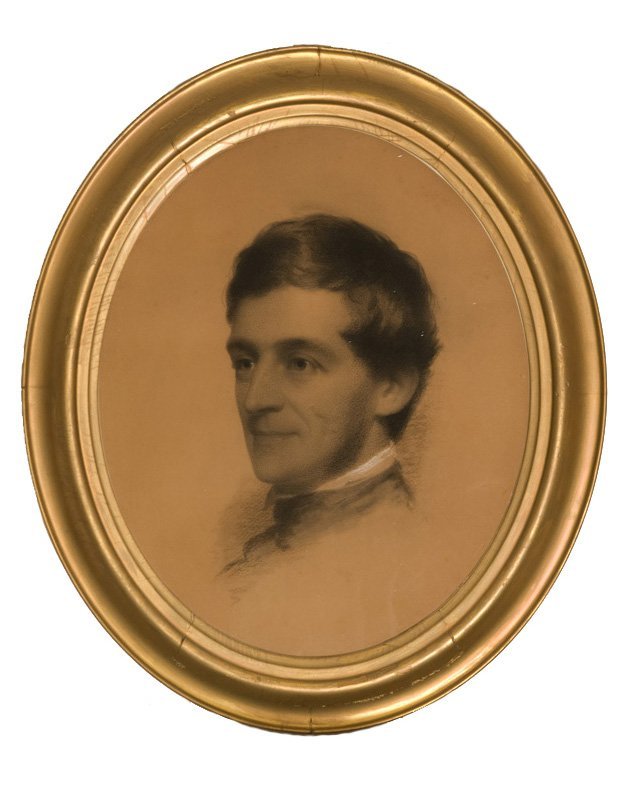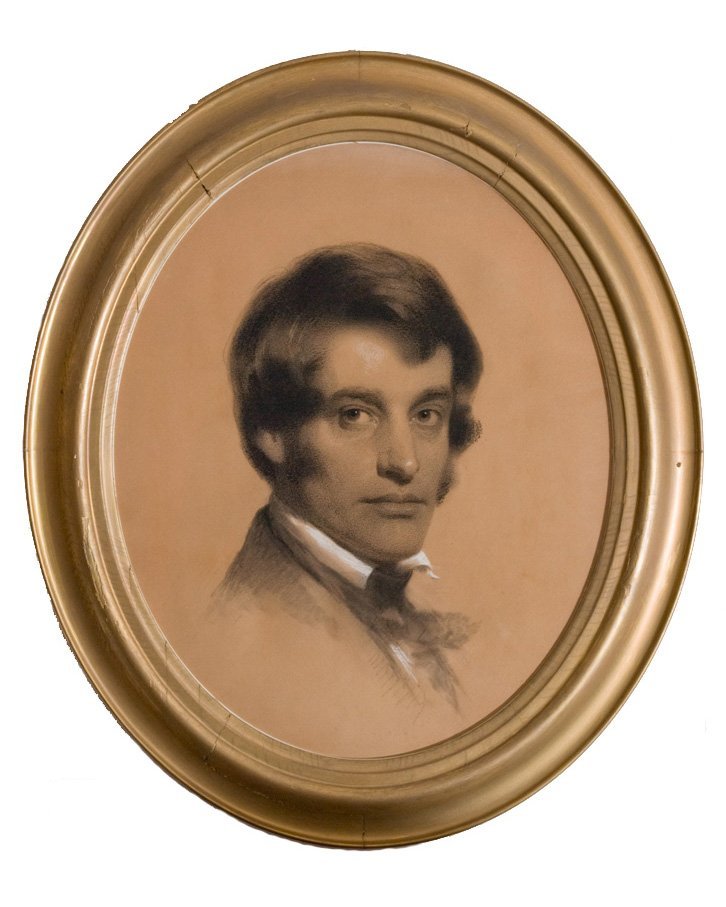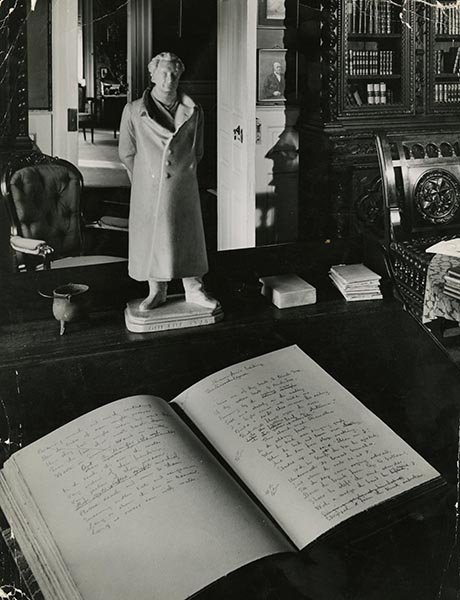7. Study
Here in the Study is where Henry Wadsworth Longfellow wrote most of his poetry. Near the window is his standing desk, which was one of the places he used to write. On his desk is his statue of German writer Johann Wolfgang Goethe. Also, in this room, Henry surrounded himself with many of his literary contemporaries and friends including Ralph Waldo Emerson and Charles Sumner. Originally, the Charles River could be seen from this house looking out the front windows towards Brattle Street. It is safe to assume that Henry would look out to the Charles River occasionally when writing some of his poetry, and perhaps find inspiration in the scenic view.
My Cathedral
"Like two cathedral towers these stately pines
Uplift their fretted summits tipped with cones;
The arch beneath them is not built with stones,
Not Art but Nature traced these lovely lines,
And carved this graceful arabesque of vines;
No organ but the wind here sighs and moans,
No sepulchre conceals a martyr's bones.
No marble bishop on his tomb reclines.
Enter! the pavement, carpeted with leaves,
Gives back a softened echo to thy tread!
Listen! the choir is singing; all the birds,
In leafy galleries beneath the eaves,
Are singing! listen, ere the sound be fled,
And learn there may be worship without words".
-Henry Wadsworth Longfellow, My Cathedral (1880)
During George Washington's time, this room is where the general met with his colonels and staff. Here they made decisions about how and when they would attempt to break the siege and force the British troops out of Boston. Washington’s leadership style was novel for the time as he and his commanders made decisions together, not by seniority of rank. One of Washington’s many ideas to break the siege was to have his troops cross the frozen Charles River and attack during the winter of 1775-1776 but that was turned down by his generals. Washington and his staff ultimately chose to use the cannons from the recently seized Fort Ticonderoga in upstate New York. The cannons were hauled over three hundred miles by teams of oxen under the leadership of a native Boston bookseller Henry Knox. The cannons arrived in Boston midwinter of 1776 and were set up on Dorchester heights along with an impromptu fort. Having a strategic disadvantage, the British agreed to retreat from Boston without burning down the town, in exchange for not being fired upon when leaving. On March 17th, 1776, British Regulars and Loyalists left the town, this day is now known locally as “Evacuation Day” and is celebrated in different parts of the commonwealth. This was a major victory for the Continental Army and George Washington's first victory. But it's important to note that Washington’s first victory was not a battle but rather a negotiation.
George Washington and his staff also debated whether African Americans should be allowed to fight in the Continental Army. In late 1775, Washington’s Army had an enlistment crisis, as many who had come from the countryside immediately after the Battles of Lexington and Concord were anxious to finish their term of enlistment and get back to their homes outside of Boston. Though a Virginia plantation owner and enslaver, Washington needed as many men as possible to keep numbers and morale up. Initially, he and his colonels decided not to integrate the army. By the winter of 1775, Washington wrote to the Continental Congress, saying he needed as many people fighting as available, and reversed the previous decision to not allow African Americans in the army. The decision to allow African Americans into the Continental Army created the most racially integrated fighting force in the U.S. until the Vietnam War.
WHEN WAS A TIME YOU WORKED WITH A TEAM?



